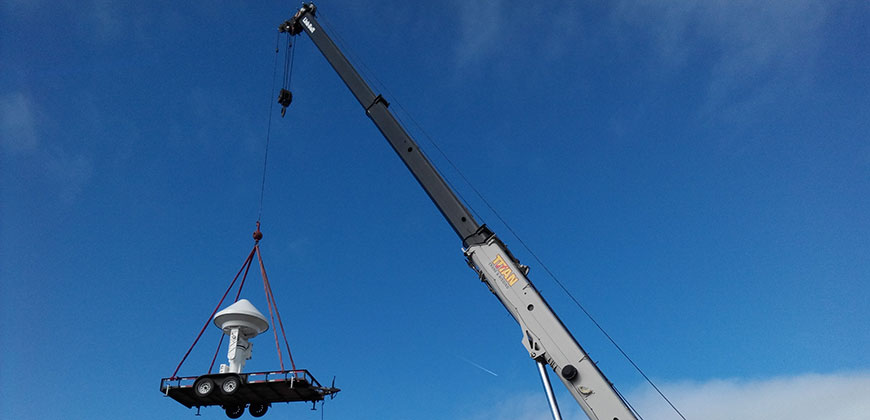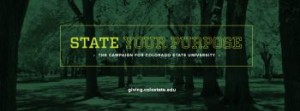
CSU radar researchers installed a scanning X-band radar at the Penitencia water treatment plant in San Jose, California. The CSU team consisted of Chandra, Rob Beauchamp and Francesc Junyent. Credit: Francesc Junyent
In the lead-up to Super Bowl 50, while most eyes were on football, Colorado State University radar scientists were a few miles from Levi’s Stadium and focused on matters higher in the sky.
CSU’s Radar Group, led by University Distinguished Professor V. “Chandra” Chandrasekar, teamed up with NOAA and the Santa Clara Valley Water District on a pilot project to deploy a scanning X-band radar in the South San Francisco Bay area. Chandra’s team is part of the NOAA El Nino Rapid Response field campaign.
NOAA Rapid Response
As El Nino warms the equatorial Pacific Ocean, it brings the threat of extreme storms to many areas, including southern and central California. The Physical Sciences Division of NOAA’s Earth System Research Laboratory sounded the call across experts in the field to fill gaps in prediction and measurement of extreme weather events during the El Nino season, roughly January through April.
Chandra and his team heeded the call. In partnership with NOAA and the Santa Clara Valley Water District, they deployed a ground-based radar system that can provide extremely accurate rainfall mapping at high spatial and temporal resolutions. And they did it quickly – in about eight weeks. The scanning X-band radar is expected to be in operation through the spring, during the height of El Nino season.
The right team with the right equipment
“We are a unique lab that has the capacity to deploy radars for specific applications,” Chandra said. “The scanning X-band technology is a relatively new area for rain measurements and is used in smaller domains for high-resolution mapping. CSU is a leader in that technology and in developing rainfall monitoring products.”

The CSU team worked closely with officials from the water district, which is busy monitoring El Nino-related rainfall and flooding using National Weather Service information and networks of rain gauges and other technologies. The locally deployed CSU radar should help the water district fill gaps in coverage, as well as improve forecasts and hydrological modeling.
“Another part of the effort is to understand the impact of rainfall, for things like water management and storage,” added graduate student Rob Beauchamp.
In under the wire
With the Super Bowl bringing thousands of people to the Bay Area, Santa Clara Water Valley District officials, NOAA and CSU worked together to have the radar up and running before the big game. They got in under the wire – about a week before Super Bowl Sunday. The CSU researchers have since returned to campus, monitoring the radar’s performance and collecting data from mission control in Fort Collins.
The NOAA El Nino Rapid Response field campaign spans the central and eastern tropical Pacific. The CSU radar team joins four other land, air and sea monitoring technologies, including a NOAA research ship and a NASA unmanned aircraft, to help high-risk areas get accurate, real-time data on severe weather.
